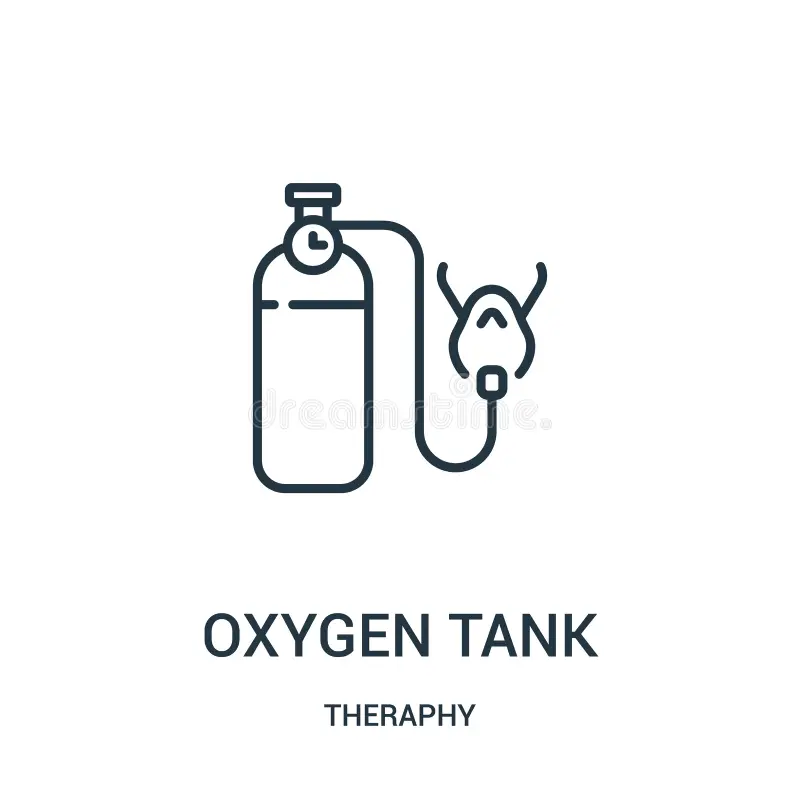The Comprehensive Guide to Oxygen Tanks: Types, Usage, and Maintenance
Oxygen tanks are essential medical devices that provide a lifeline to individuals with respiratory conditions. Whether as a temporary measure or a long-term solution, understanding the different types of oxygen tanks, their usage, and proper maintenance is crucial for ensuring a constant and reliable oxygen supply. In this comprehensive guide, we will delve into the world of oxygen tanks, addressing their importance, benefits, and key considerations for optimal functionality.

Why Oxygen Tanks Matter
Oxygen is a fundamental element for sustaining life. For those with respiratory challenges, such as chronic obstructive pulmonary disease (COPD), asthma, or other conditions, the availability of supplemental oxygen can significantly enhance their quality of life. Oxygen tanks play a vital role in delivering concentrated oxygen to the lungs, ensuring adequate oxygen levels in the blood, and alleviating symptoms such as shortness of breath and fatigue.
Understanding the Types of Oxygen Tanks
Different situations call for different types of oxygen tanks. Understanding the available options can empower individuals and caregivers to make informed decisions about the most suitable choice. Here are some common types of oxygen tanks:
Compressed Oxygen Tanks:
These tanks contain oxygen gas compressed at high pressure. They are available in various sizes and are often used for portability and short-term oxygen therapy.
Liquid Oxygen Tanks:
Liquid oxygen is stored in these tanks at extremely low temperatures. They are more compact than compressed gas tanks and are ideal for individuals with higher oxygen requirements.
Oxygen Concentrators:
While not tanks in the traditional sense, oxygen concentrators are devices that extract oxygen from the surrounding air. They are often used at home and provide a continuous supply of oxygen.
Portable Oxygen Concentrators:
These battery-operated devices offer greater mobility and are suitable for individuals who need oxygen on the go.
Determining Oxygen Requirements
Before selecting an oxygen tank, it’s crucial to accurately determine the oxygen requirements of the individual. This assessment is typically conducted by a healthcare professional and involves factors such as lung function, activity level, and specific medical needs. By understanding these requirements, you can ensure that the chosen oxygen tank meets the individual’s oxygen needs effectively.
Using Oxygen Tanks Safely
Proper and safe usage of oxygen tanks is paramount. Follow these guidelines to ensure the safety of both the individual using the oxygen and those around them:
Avoid Open Flames and Smoking:
Oxygen supports combustion, so keep the area around the oxygen tank free from open flames, sparks, and smoking.
Proper Ventilation:
Ensure that the room is well-ventilated to prevent oxygen concentration from accumulating to potentially dangerous levels.
Secure the Tank:
Oxygen tanks should be securely stored and positioned to prevent them from tipping over.
Regular Inspection:
Check the tank, tubing, and connections regularly for any signs of damage or wear. Replace any components as needed.
Maintaining Oxygen Tanks for Longevity
Maintaining oxygen tanks is essential for their longevity and reliable performance. Here are steps to keep your oxygen tanks in optimal condition:
Keep Tanks Clean:
Regularly wipe down the exterior of the tank to remove dust and dirt that could potentially affect its performance.
Store Properly:
Store oxygen tanks in a cool, dry place away from direct sunlight and extreme temperatures.
Replace Components:
Follow manufacturer guidelines for replacing components such as regulators and tubing when necessary.
Follow Manufacturer Instructions:
Adhere to the manufacturer’s instructions for maintenance, cleaning, and servicing of the oxygen tank.
Frequently Asked Questions (FAQs) About Oxygen Tanks
Q: What is an oxygen tank used for?
A: An oxygen tank is used to provide supplemental oxygen to individuals with respiratory conditions, ensuring adequate oxygen levels in the blood.
Q: How do I determine the right size of oxygen tank?
A: The right size of an oxygen tank depends on factors like oxygen requirements, activity level, and duration of use. Consult a healthcare professional for accurate sizing.
Q: Can I use an oxygen tank at home?
A: Yes, oxygen tanks can be used at home, especially when prescribed by a healthcare provider. Proper safety measures and guidelines should be followed.
Q: What are the benefits of using liquid oxygen tanks?
A: Liquid oxygen tanks offer higher oxygen capacity in a more compact size, making them suitable for individuals with higher oxygen needs.
Q: How do oxygen concentrators compare to oxygen tanks?
A: Oxygen concentrators extract oxygen from the air and provide a continuous supply, while oxygen tanks contain pre-compressed oxygen. The choice depends on individual needs.
Q: Can I travel with an oxygen tank?
A: Yes, portable oxygen tanks and concentrators are designed for travel. Check with your airline and follow transportation guidelines.
Q: How often should I clean my oxygen tank?
A: Regularly wipe down the exterior of the tank to keep it clean. Follow manufacturer instructions for maintenance and cleaning.
Q: Can I refill my own oxygen tank?
A: Oxygen tanks should be refilled by trained professionals to ensure proper safety and quality standards.
Q: What precautions should I take when using oxygen tanks?
A: Avoid open flames, smoking, and ensure proper ventilation. Follow safety guidelines provided by your healthcare provider.
Q: How can I prolong the lifespan of my oxygen tank?
A: Proper storage, regular maintenance, and adherence to manufacturer instructions can help prolong the lifespan of your oxygen tank.
Conclusion
Oxygen tanks play a vital role in enhancing the lives of individuals with respiratory conditions. By understanding the different types, determining accurate oxygen requirements, and following safety protocols, individuals can benefit from a reliable and consistent oxygen supply. Proper maintenance ensures the longevity of the oxygen tank, providing peace of mind and improved quality of life.




